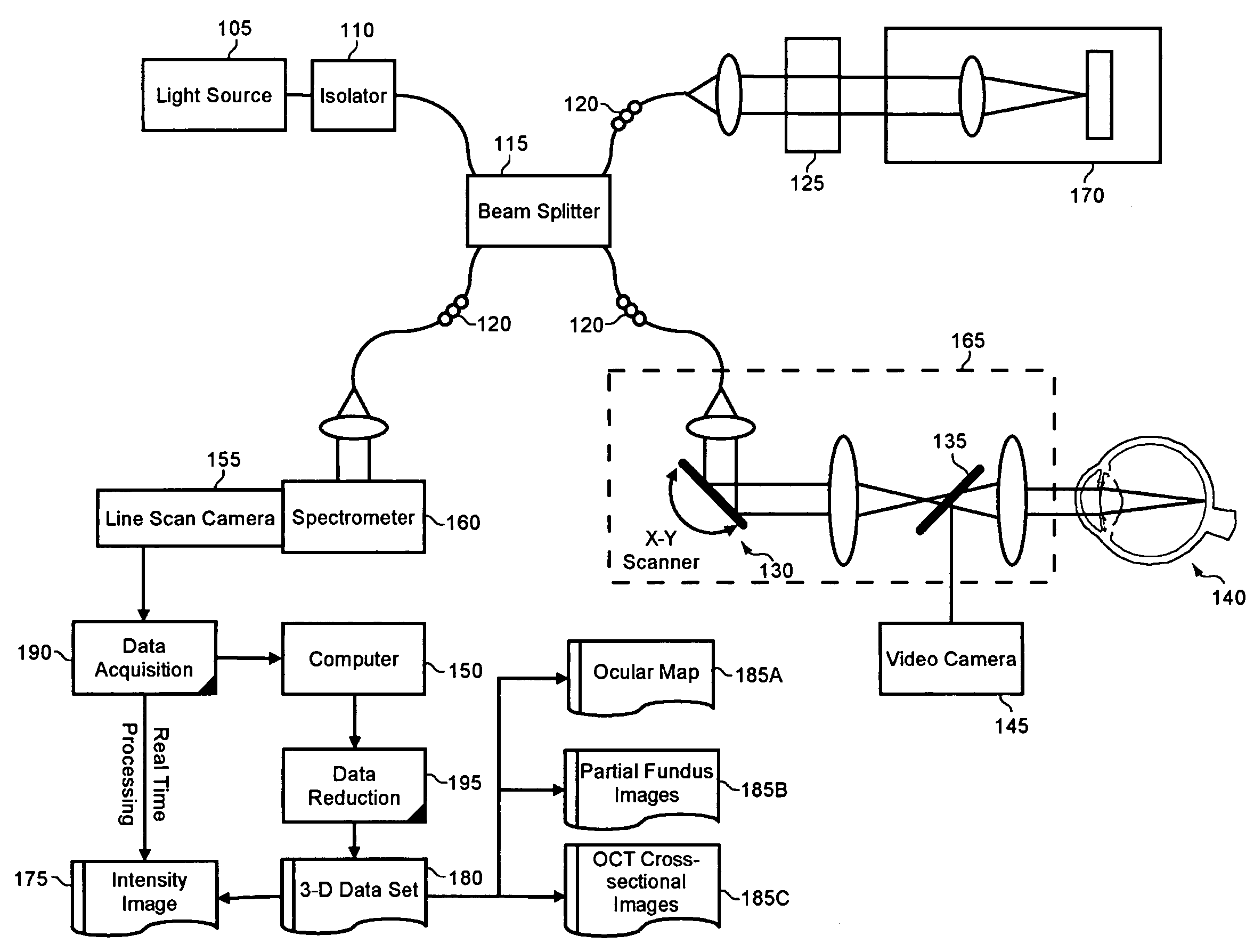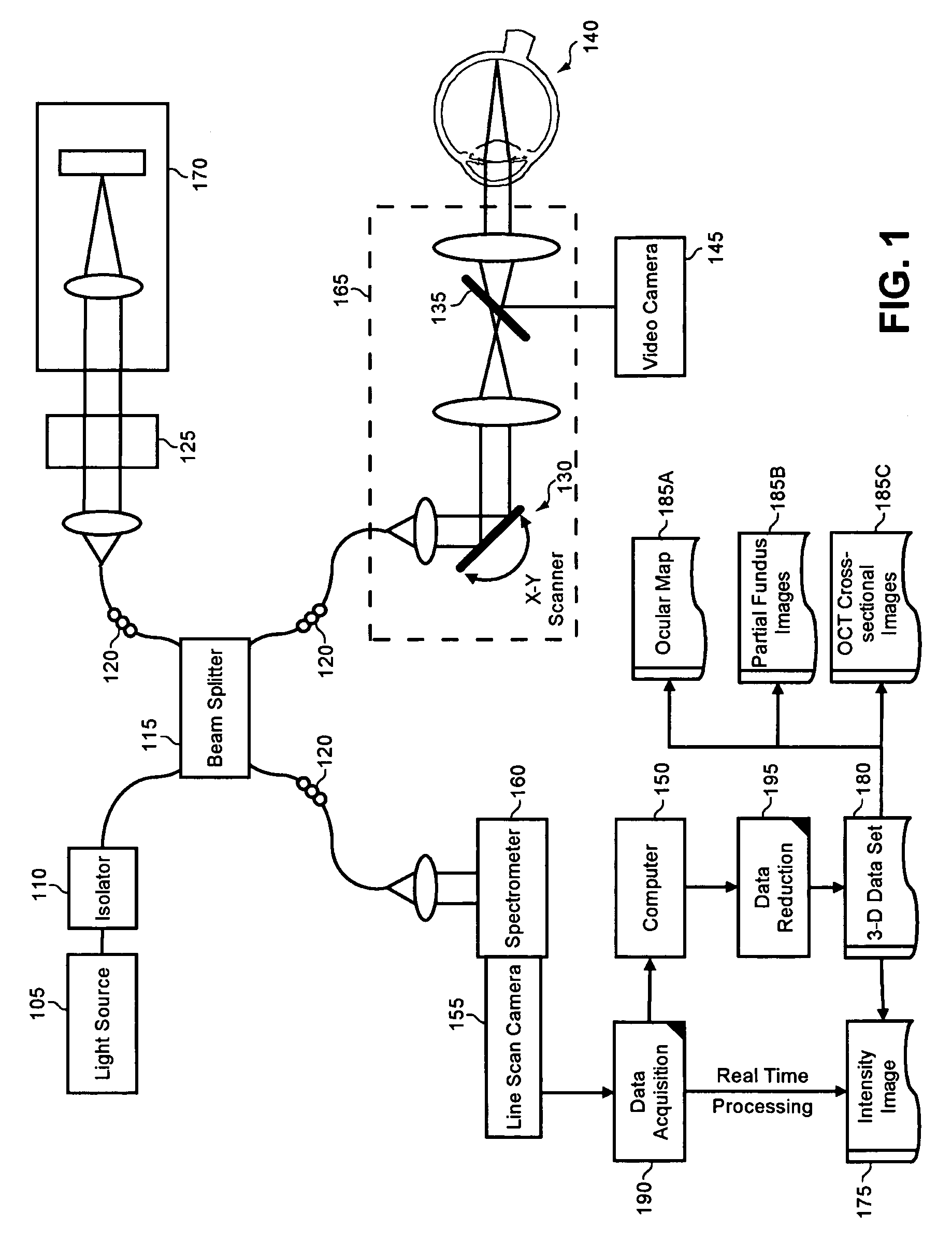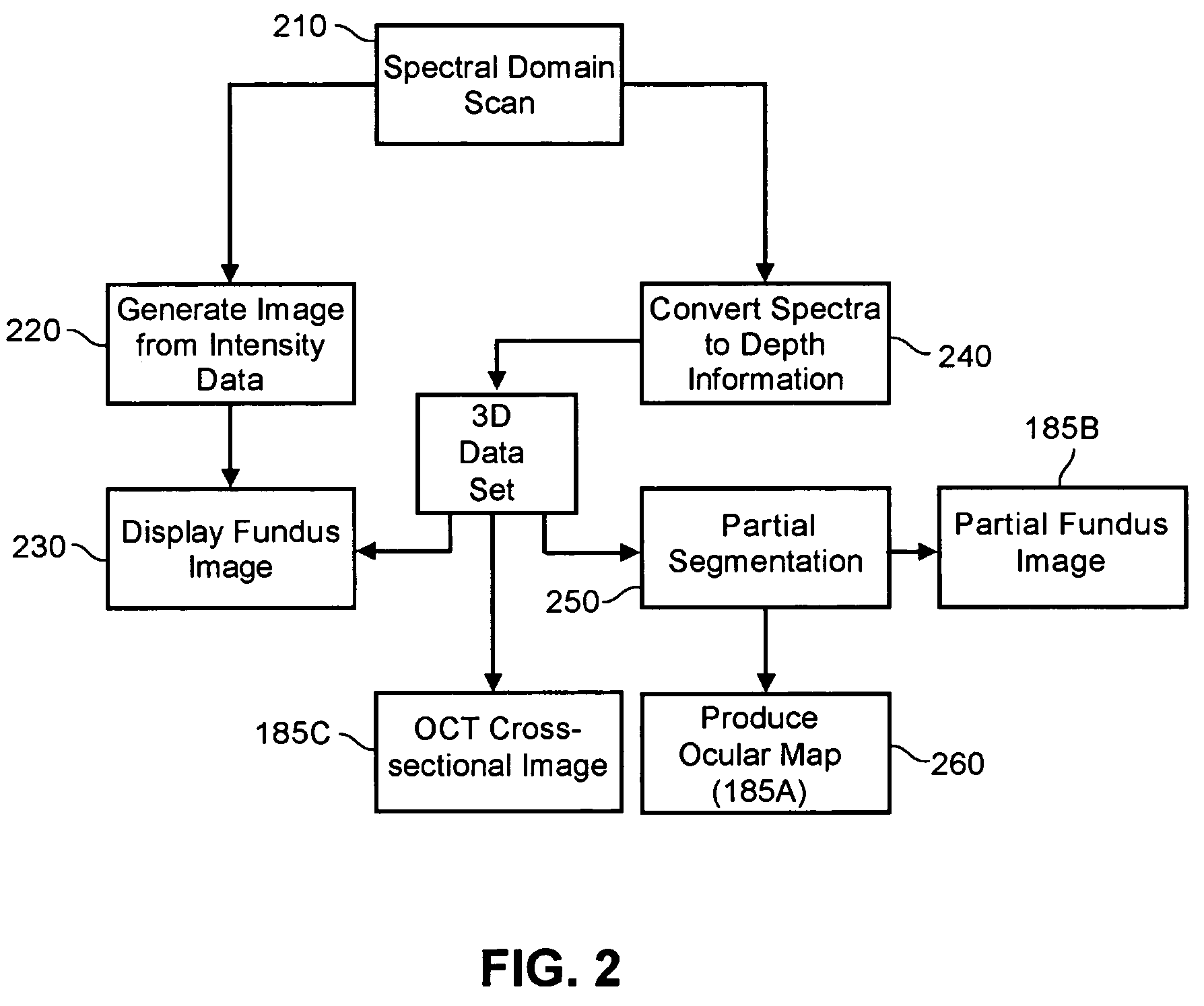Enhanced optical coherence tomography for anatomical mapping
an anatomical mapping and optical coherence tomography technology, applied in the field of coherent waveform based imaging, can solve problems such as loss of depth information, and achieve the effect of reducing total information content and enhancing anatomical mapping
- Summary
- Abstract
- Description
- Claims
- Application Information
AI Technical Summary
Benefits of technology
Problems solved by technology
Method used
Image
Examples
Embodiment Construction
[0017]The present invention is a system, method and apparatus for anatomical mapping through the production of a 3-D data set, for instance through imagery produced utilizing OCT. In accordance with the present invention, a fundus intensity image can be acquired from a spectral domain scanning of light back-reflected from an eye. The 3-D data set can be reduced to generate an ocular mapping, including edema mappings and thickness mappings. Optionally, a partial fundus intensity image can be produced from the spectral domain scanning of the eye to generate an en face view of the retinal structure of the eye without first requiring a full segmentation of the 3-D data set.
[0018]In further illustration, FIG. 1 is a schematic illustration of an OCT imaging system configured for anatomical mapping in accordance with the present invention. As shown in FIG. 1, a low coherent light source 105 can be provided. The low coherent light source 105 can be a super-luminescent diode, such as a super...
PUM
 Login to View More
Login to View More Abstract
Description
Claims
Application Information
 Login to View More
Login to View More - R&D
- Intellectual Property
- Life Sciences
- Materials
- Tech Scout
- Unparalleled Data Quality
- Higher Quality Content
- 60% Fewer Hallucinations
Browse by: Latest US Patents, China's latest patents, Technical Efficacy Thesaurus, Application Domain, Technology Topic, Popular Technical Reports.
© 2025 PatSnap. All rights reserved.Legal|Privacy policy|Modern Slavery Act Transparency Statement|Sitemap|About US| Contact US: help@patsnap.com



